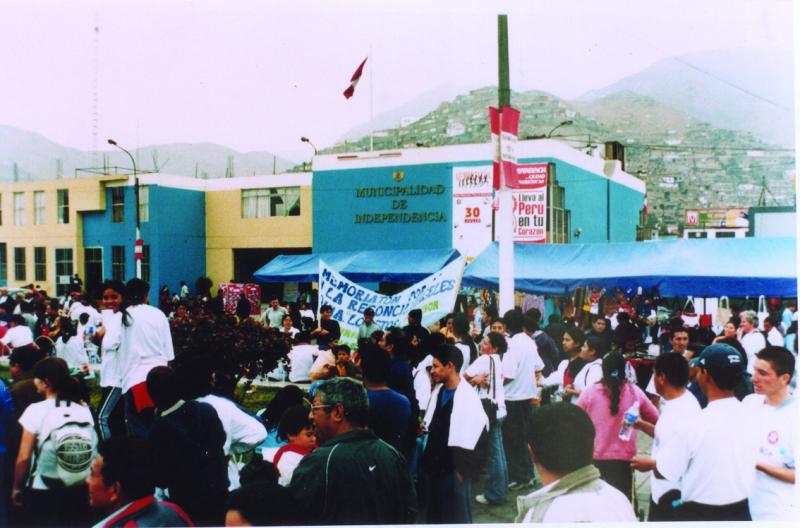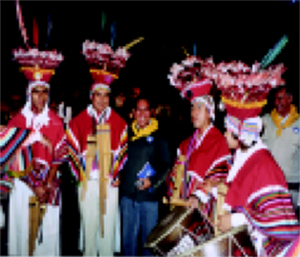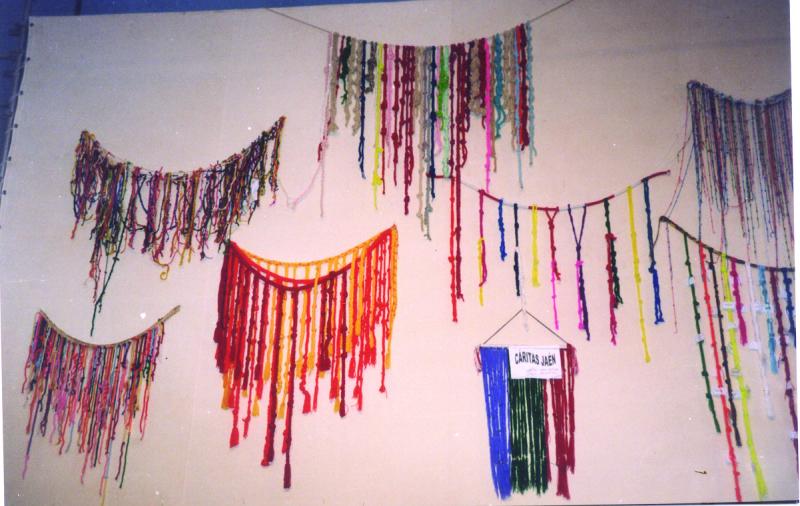‘Memoriatón’ For Reconciliation In Peru
By Father Chris Baker SSC
The author, ordained in 1950, is one of three Australian brothers who are Columban priests. His elder brother, Father Leo, was ordained in 1948 and is now retired in Australia after many years in Japan. His younger brother Patrick, ordained in 1962, is based in OzamizCity and is coordinator of the Columban Associate Priests’ Program in the Philippines.

Map of PERU
Twenty years of Sendero Luminoso, ‘Shining Path,’ terrorism and its repression by the police and armed forces of Peru came to a halt in 2000. Shortly after the dismissal of President Alberto Fujimori that year, an interim and then democratically elected president, Alejandro Toledo, set up a Commission for Truth and Reconciliation. Twelve well qualified and respected citizens were commissioned to investigate in depth the years of internal armed conflict from 1980 to 2000. Peruvians needed to know the full truth about the causes and consequences of the conflict in order to embark on the path to reconciliation. During two years of tireless field work, the commissioners, with the aid of 500 collaborators, interviewed some 17,000 victims of those violent years. Their findings were expertly analyzed and coordinated to show the date, place and results of each attack by armed groups causing death or destruction.
Deaths in 20 years
In August 2003 the Commission presented its Final Report to President Toledo. The nation was shocked to find out that an estimated 69,280 people had been killed during those 20 years. Eighty-five percent of those killed were humble country people, and 75 percent spoke Quechua or other indigenous languages rather than Spanish. Of the deaths reported to the Commission, 55 percent were inflicted by Shining Path militants, while the armed forces and police were responsible for 35 percent. The Commission pinpointed the conditions which gave rise to the armed conflict, and made many excellent recommendations to remedy the enormous damage done to mostly innocent people. It also insisted on sweeping reforms of the State authorities and armed forces to prevent the same tragedy being repeated in the future.
Let the people remember

PERU CROWD
Instead of galvanizing the present government into implementing those recommendations, the Final Report has been badly neglected by most of the politicians and military. On the other hand, many Peruvian groups are doing their best to ensure that the Report not be buried and ignored in practice. This is what inspired social justice officers of the Diocese of Carabayllo and Columban missionaries to collaborate in organizing a ‘Memoriatón’ on Saturday 30 July 2005. The title compresses the Spanish forms of ‘memory’ and ‘marathon,’ because what we planned was a short marathon in the morning, leading the participants to a festival of memory in the afternoon. We had a commission working on the details for three months so that the marathon and the festival would arouse plenty of public participation.
Successful festival
The mini-marathon (8 kms) was so well attended that we had handed out all the 500 specially printed T-shirts to starters, and another 100 or more kept lining up. They had to set off without T-shirt or free bottle of water, as we had not expected so many starters. (We tried to make amends after the marathon by giving them a copy of the 20-page booklet produced by the commission, To Share the Memory in order to Reconstruct our Country, a popular summary of the 500-page Final Report.)
Police patrol cars and motorcycles had been sent to protect the joggers and walkers as they set off on a normally very busy avenue leading away from Lima’s international airport and crossing several other busy roads. Two of our priests in training for full marathons, Columban Father Tony Coney from Belfast and Fr Michael McKinnon, a Columban Associate Priest from the Diocese of Ballarat, Australia, led and kept the front group together, while Fr Peter Doyle, an Australian Columban, and I followed by car near the police vehicles. When they left we brought up the rear of the field, behind the ambulance with its doctor and nurse from Sister Millie McNamara’s Mercy Clinic. Fortunately, only a mother and a couple of children needed first aid and a free ride. All the others reached the finishing line at the Municipal Offices of Independencia, where the local Mayor, Yuri Vilela, had kindly offered us all facilities for the festival of memory.’
The mayor himself was there to greet the marathon joggers/walkers, as well as many other interested people who joined them in the municipal square. Likewise Bishop Lino Panizza of Carabayllo spoke of the need to keep alive the memory and lessons of those twenty most deadly years in all of Peru’s history since independence. Other speakers linked our short marathon with the long marathon of 2,200 kilometers then being jogged and walked by four ‘chasquis.’ They were following the old Inca road from Piura to Puno, in the footsteps of the legendary Inca chasquis, running couriers who carried official messages in the form of quipus,cords with a varying arrangement of knots.
The four modern ‘chasquis,’ including two youths orphaned by the conflict, were volunteers who wanted to collect quipus from representatives of every city, town and hamlet along their route. That old Inca road took them from top to bottom of Peru, through and over towering Andes mountains. It was chosen because it passes through practically all the areas where the vast majority of victims came from. This time each knot was to represent a person killed or otherwise damaged by the armed conflict in that area. At the end of their marathon, the four modern couriers were to bring all those quipus to the newly designated Memorial Grove near the middle of Lima. There they are to be enshrined permanently, surrounded by 69,280 stones, each bearing the name of a person killed.
Step to reconciliation

PERU GROUP
During the afternoon of our Memoriathon, a Peruvian Columban priest who writes and records his own songs, Father Diego Cabrera (www.padrediego.com), coordinated several good bands that came along. A highlight was the singing of an internationally acclaimed singer, Martina Portocarrero. She voluntarily sang many moving Peruvian songs and explained their importance for our theme. The audience also went into a municipal hall to see appropriate movies and photos. Everybody was encouraged to make a large quipu to be added to those carried in by the four hardy couriers. In that way the message from the departments which suffered most would be joined to that of Lima. The message expressed symbolically was that the blood of nearly 70,000 killed by their brothers would continue to cry out loudly from the earth until all their fellow Peruvians entered into a dialogue of reconciliation and make amends for any unjust damage inflicted on others. We feel that such solidarity in the creation of a huge national Quipu is already an important step along the road to national reconciliation.

PERU Quipu
By a striking coincidence, shortly before our Memoriatón archeologists announced that they had unearthed a well preserved quipu, which they estimated to be about 3,000 years old! They found it while excavating Caral, Peru’s most ancient city. It indicates how deeply the quipu is embedded in Peruvian culture.
Less than a month after our Memoriathon we joined in a rousing welcome given by many thousands of people to those four remarkable ‘chasquis’ as they entered the Memorial Grove in Lima. They were fresh from finishing their 2,200 kms in Puno the previous day, but were looking fit. They spoke eloquently and confirmed for us that the main message heard all along their route was justice, reconciliation and reparation for the damage done.
